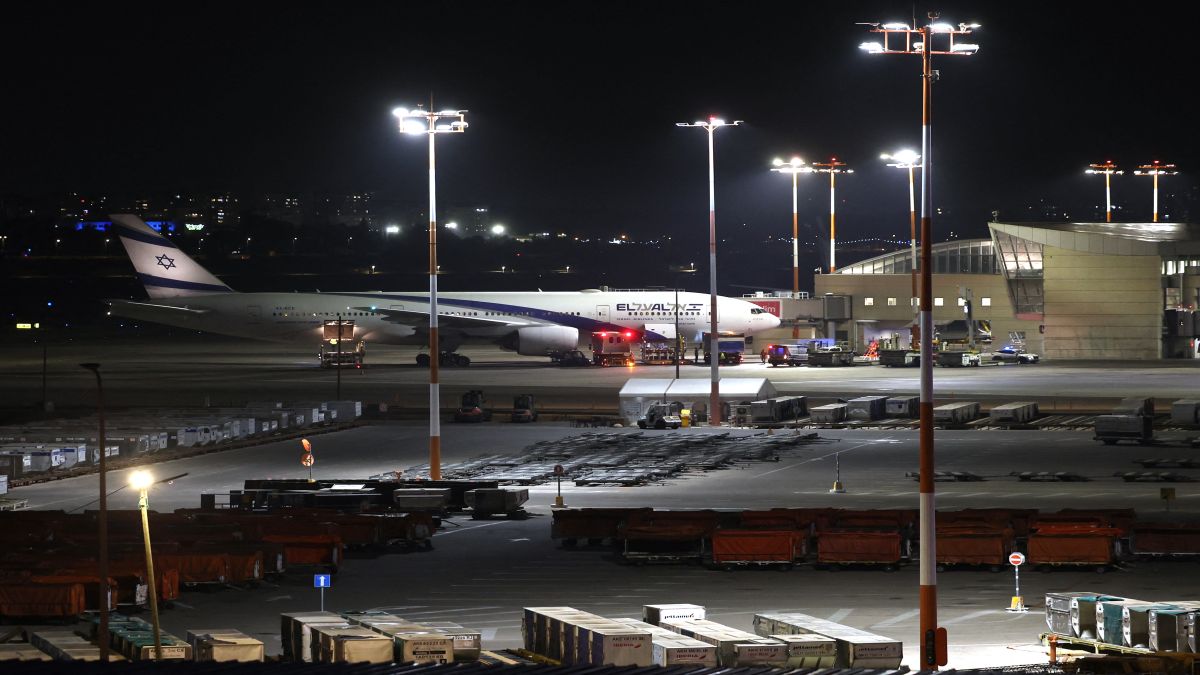If one takes a look at the map of the world depicting planes in the air, one thing will definitely stand out — the big gaping holes in the sky where no flights can be found. Airlines continue to steer clear of the airspace over Iran and Israel as the US joined the war on Sunday. Other parts of West Asia, such as Iran, Iraq, Syria also remain out of bounds for airlines. Similarly, visuals shows few aircraft flying over Russia and Ukraine skies.
This situation is causing massive losses to the aviation sector; after all, avoiding a specific air space means longer flights, which, in turn, means more money being spent. As CNN notes, “Global travel is subject to the whims of international geopolitics at most times, but never more so than in the sky.”
We take a closer look at how different airspaces have been affected owing to conflicts and the price airlines have to pay.
Airlines avoid West Asian skies
On Sunday (June 22), airlines continued to avoid large parts of West Asia after the US hit three nuclear sites in Iran , pushing the conflict in its most dangerous phase. On social media, FlightRadar24, which tracks aircraft, said, “Following US attacks on Iranian nuclear facilities, commercial traffic in the region is operating as it has since new airspace restrictions were put into place last week.”
Its website showed airlines were not flying in the airspace over Iran, Iraq, Syria and Israel. They have chosen other routings such as north via the Caspian Sea or south via Egypt and Saudi Arabia, even if it results in higher fuel and crew costs and longer flight times.
In fact, British Airways and Singapore Airlines on Sunday cancelled their flights to Dubai owing to the escalating tensions. Moreover, British Airways has also cancelled its flights to Doha and earlier also announced a pause on flights to Bahrain.
The Emirates, which is West Asia’s largest airline, announced on June 15 that it was suspending flights to and from Iraq, Jordan, Lebanon and Iran following the Israeli strikes. The carrier said flights to Amman and Beirut would remain grounded through June 22, while services to Tehran, Baghdad and Basra would be suspended until at least June 30.
Even Qatar Airways and Etihad made similar announcements of flight cancellations. An analysis by FlightRadar24 reveals that ever since the Israel-Iran war broke out on June 13, there have been more than 3,000 flight cancellations per day in West Asia with airlines clearing Iran, Iraq and Syria airspace and opting for Saudi Arabia and Egypt.
Airlines wary of Russia-Ukraine airspace
Russia’s invasion of Ukraine, which began in February 2022, has also caused airline companies to skip the airspace over the two countries. In the early days of the war, Ukraine and Russia closed off their airspace to each other as well as to the world.
Today, there is some international air traffic over Russia, but this is mostly Chinese carriers such as Air China, Xiamen Air or Cathay Pacific. Moreover, Russian airspace bordering Ukraine has been closed to all commercial airlines since the start of the invasion.
This move of shutting Russian-Ukraine airspace particularly hurt some airlines — namely Finnair and Japan Airlines. They were forced to fly over the Arctic Ocean to avoid Russia, which, in turn, resulted in longer flights —Helsinki to Tokyo is effectively four hours longer now.
Losses airlines will have to burden
Airlines have to burden heavy losses as a result of airspaces being shut down. As Tony Stanton, consultant director of Strategic Air in Australia told CNN, “No matter the airline, flight disruptions cost money — a lot of it.”
Explaining further, he said that the current Israel-Iran hostilities is forcing carriers to add two hours on non-stop flights from London to Hong Kong. In the same CNN report, he added that this means more fuel.
And at a time when oil prices are further rising , this is an additional expense for airlines to burden.
Besides the burden of fuel costs, flight diversions and longer flight hauls mean increased costs for crew time and new charges to overfly different airspace.
And in order to recoup these losses, airlines are hiking the fares — but this too, could hurt the aviation companies in the long run. Europe is likely to see the sharpest fare hikes, especially for routes to France, Germany and UK, Jatinder Paul Singh, global CEO of Viacation, a travel solutions provider, told the Economic Times. “Airfares to Europe have gone up by 20–35 per cent between March and July based on forward bookings data.”
Similarly, airfares for Dubai and Abu Dhabi from India are 10-15 per cent higher from a month ago, while those to Japan and South Korea are 5-10 per cent higher, noted Abraham Alapatt, president and group head for marketing, service quality, value added services and innovation at travel company Thomas Cook (India) in the Economic Times report.
Apart from the cost and pricing issue, conflicts such as the Israel-Iran war and the Russia-Ukraine conflict also increases the risk of flying, stressing already overburdened air traffic controllers. For instance, FlightRadar24 clearly shows how air traffic is currently being pressed into two narrow corridors. This leads to more work for air traffic controllers, who are fitting more aircraft into smaller spaces, said experts.
Moreover, Safe Airspace, a website run by OPSGROUP, noted that US strikes on Iran may increase risks to US operators in the region. “While there have been no specific threats made against civil aviation, Iran has previously warned it would retaliate by attacking US military interests in the West Asia – either directly or via proxies such as Hezbollah,” Safe Airspace said.
The website further noted that risks could extend to Bahrain, Kuwait, Oman, Qatar, Saudi Arabia and the United Arab Emirates. “We continue to advise a high degree of caution at this time,” it said.
With inputs from agencies
)